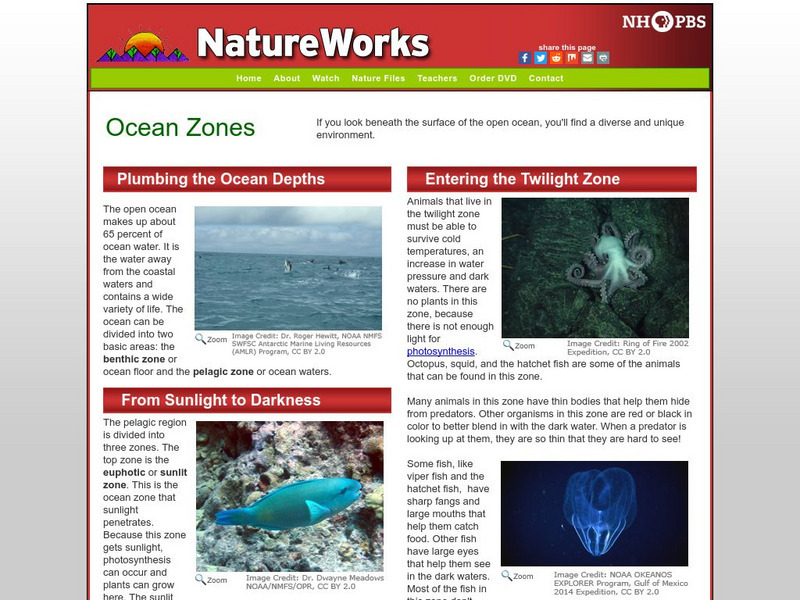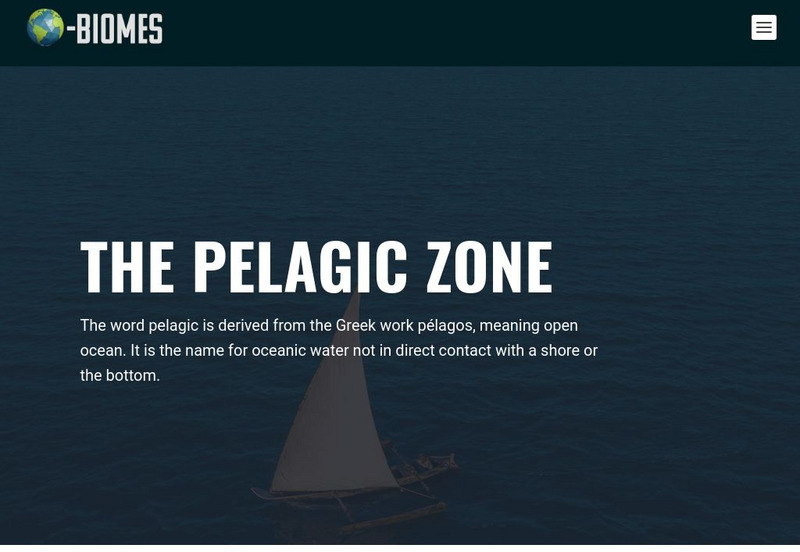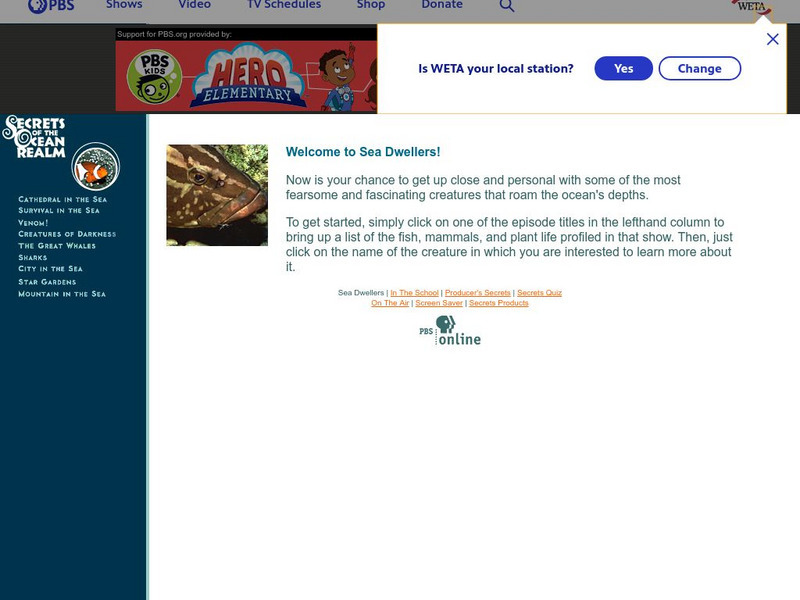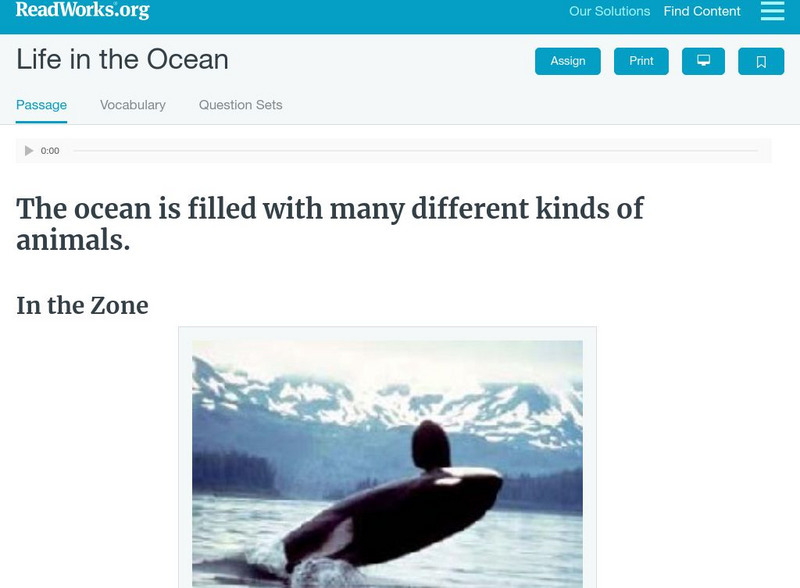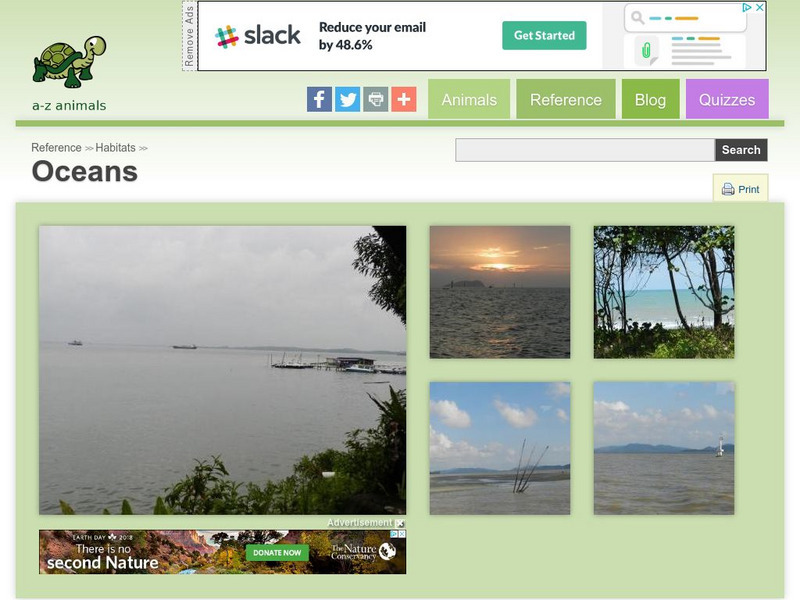Hi, what do you want to do?
Curated OER
John Fitch: Pioneer Steamboat Inventor
Learners explore the transportation revolution brought about through the use of steam power to move boats over water. They practice note taking skills by taking notes from an article.
Curated OER
Interest Survey
In this science and social studies instructional activity, students complete a survey about their interests. Students check each subject that they are interested in, such as killer whales, Thomas Edison, and magnets.
Curated OER
Zoology Word Search Puzzle
In this science learning exercise, students look for the words that are related to the concept of zoology that is reviewed in the sheet. They also acquire new vocabulary.
Curated OER
Whale Echolocation
Learners demonstrate how a whale uses echolocation to track food and identify one other animal that also uses echolocation. In this echolocation lesson, students play a game where one child (the whale) is blindfolded and gives a signal...
Curated OER
Biological Communities
Students identify consumers and producers in different communities. Students collect a variety of soil samples and record organisms found in the samples.
Curated OER
Shape and Colors: Rectangles, Squares, Triangles, Ovals and Circles
In this shape and color worksheet, students trace rectangles, coloring them brown, squares, coloring them grey, triangles, coloring them purple, ovals, coloring them neon green, and circles, coloring them blue. Students also color a...
Curated OER
ESL-Homonyms #2
In this ESL homonym worksheet, students complete a set of 20 multiple choice questions, choosing the homonym that correctly completes a set of sentences. Worksheet is labeled as a quiz, but is appropriate for practice.
Curated OER
Literature-based Skill Building: Holes by Louis Sachar
In this reading skills worksheet, students complete several literature-based skill building activities for the book 'Holes' by Louis Sachar.
Curated OER
Picture-Word Match
In this picture and word matching activity, students match 3 pictures with their names, drawing lines to match. A reference web site is given for additional activities.
Curated OER
The Dead Zone: A Marine Horror Story
Students graph dissolved oxygen versus depth using data taken from NECOP Program. In this marine science instructional activity, students explain the causes of hypoxia. They recommend possible solutions to this problem.
Curated OER
Coral Reefs Endangered
Students research where in the world coral reefs are located. In this ecology lesson plan, students create food chains and food web. They simulate growing coral reefs to understand their characteristics better.
Curated OER
Bermuda: Search for Deep Water Caves 2009: Out of Darkness
Young scholars analyze the three models on the origin of troglobitic fauna. In this life science lesson, students also consider how the Zonation model explains the fauna's origin. They also use the Internet to research solutional and...
Unite for Literacy
Unite for Literacy: Animals: Ocean Beasties
See some of the amazing animals that live in the ocean. Each page has one animal name and a photograph. Includes audio narration in English and Turkish with text in English.
Boise State University
Boise State University: Ocean Exploration: Abyssopelagic (Abyssal) Zone
Learn about the very cold, dark region of the ocean known as the abyss. Includes information on the origin of the name of this ocean zone, as well as information on its depth and animal life.
Smithsonian Institution
National Museum of Natural History: Ocean Planet
Detailed website that was a companion to a 1995 traveling exhibit of the Smithsonian. Links to lesson plans and other educational materials are at the bottom of the page. Enter the exhibition to explore the world of the ocean.
PBS
Nh Pbs: Nature Works: Ocean Zones
Discover more about the underocean environment at this site that surveys animals, environmental factors such as light and temperature, currents, animals, plants, and the like.
E-learning for Kids
E Learning for Kids: Science: Pacific Ocean: What Can We Find on a Beach?
Josephine lives on the Marshall Islands. Follow her to the beach and find out what kinds of plants and animals live there.
Other
Ocean Tracks: Fact or Artifact? Interpreting Patterns in Ocean Tracks Data [Pdf]
Ever wonder where marine animals go? How fast they swim? How deep they dive? Electronic tagging has opened a new window into the world of the open ocean. Ocean Tracks gives you access to data collected by tags on real live migrating...
The Wild Classroom
The Wild Classroom: Biomes of the World: Oceanic Pelagic Biome
Learn about the oceanic pelagic ecosystem. Find out about plants, animals, adaptations, and conservation efforts.
The Wild Classroom
The Wild Classroom: Biomes of the World: Coastal Ocean Biome
Learn about the coastal ecosystem. Find out about plants, animals, adaptations, and conservation efforts.
Science Struck
Science Struck: Understanding the Ocean Ecosystem
Describes the two organisms capable of photosynthesis in an ocean ecosystem, the different ocean zones and the plants and animals that live in them, some facts about the ocean, and the five oceans of the world.
Read Works
Read Works: Life in the Ocean
[Free Registration/Login Required] An informational text about the different depth levels of the ocean and the types of animals that live in each. A question sheet is available to help students build skills in reading comprehension.
A-Z Animals
A Z Animals: Reference: Habitats: Oceans
Learn about the ocean ecosystem, and how its characteristics affect the life within it.
Other popular searches
- Ocean Ecosystems Animals
- Oceanic Trenches and Animals
- Grassland Animals Ocean
- Ocean Plants and Animals
- Oceans Animals
- Oceanic Animals Adaptations




















